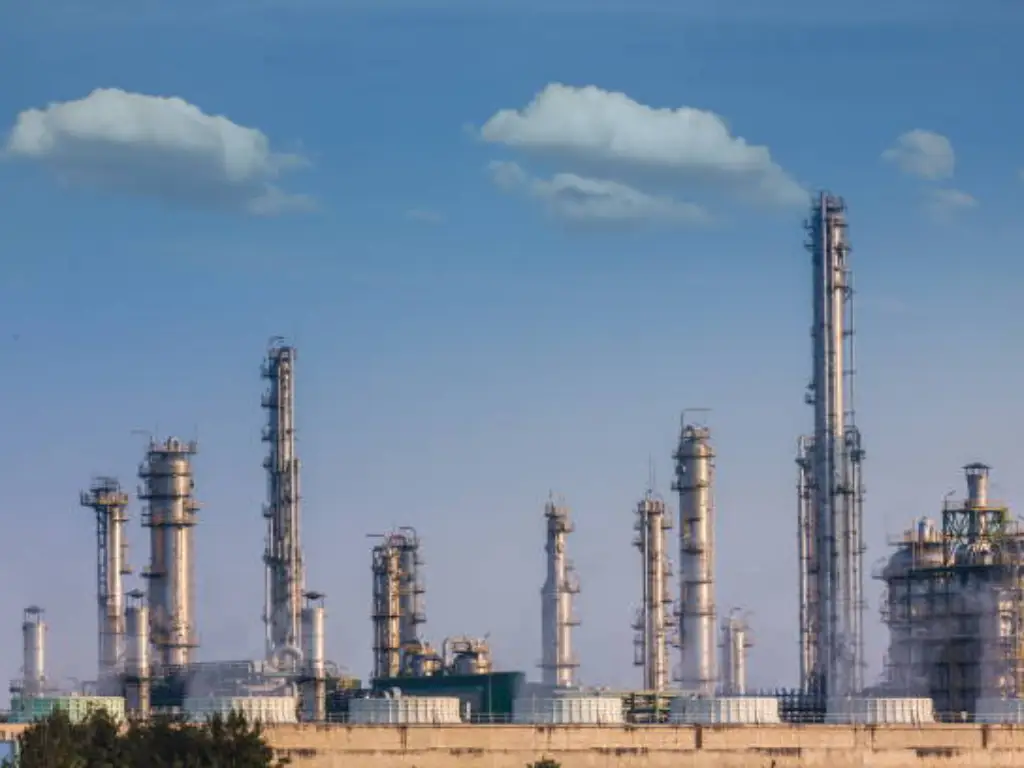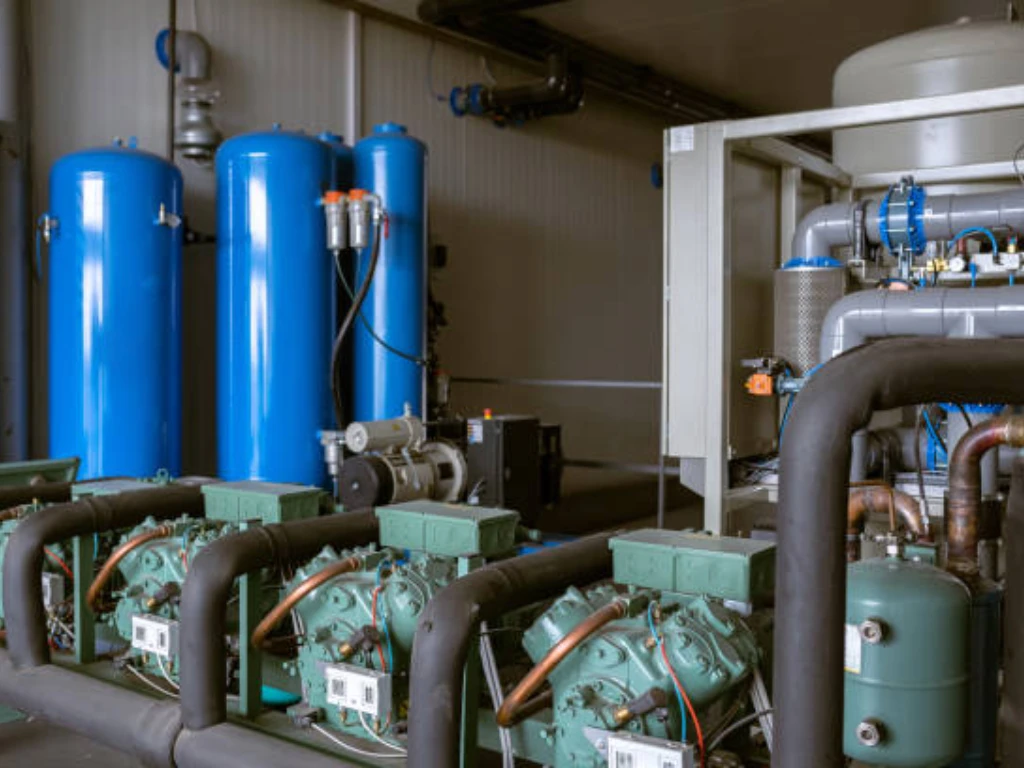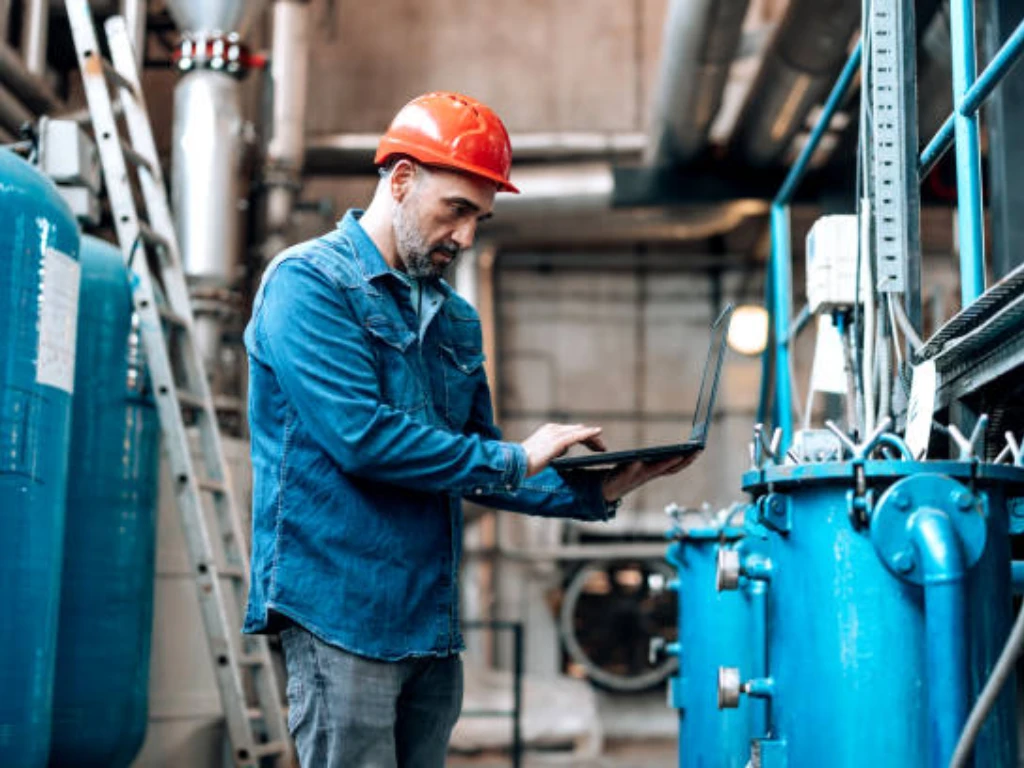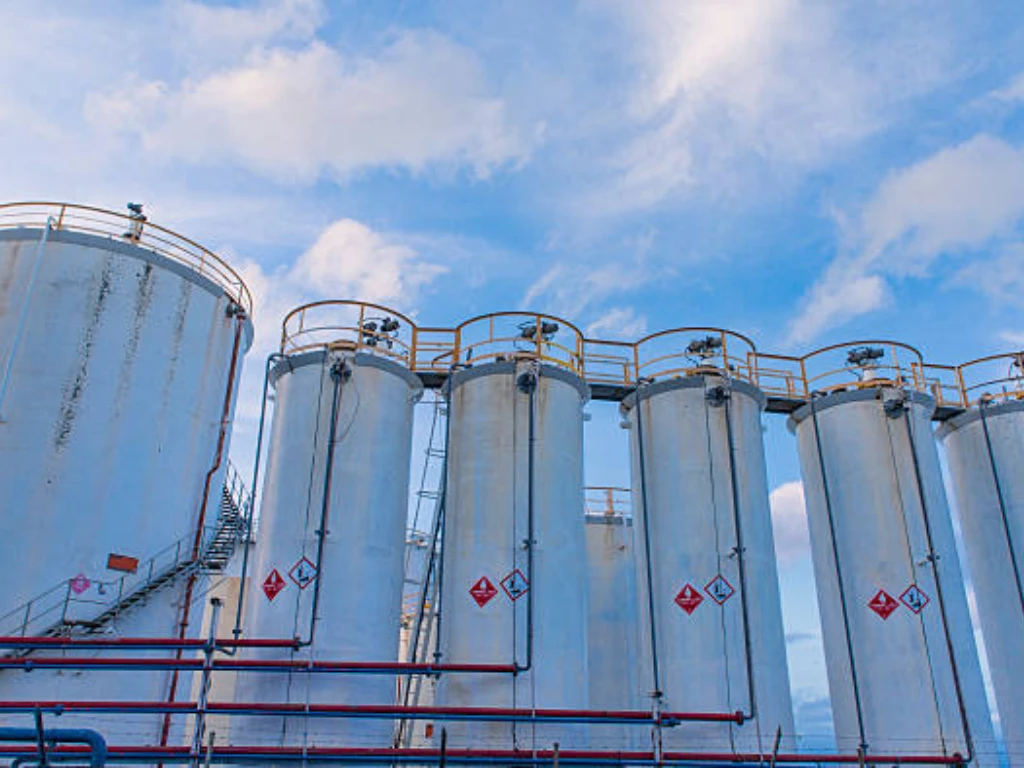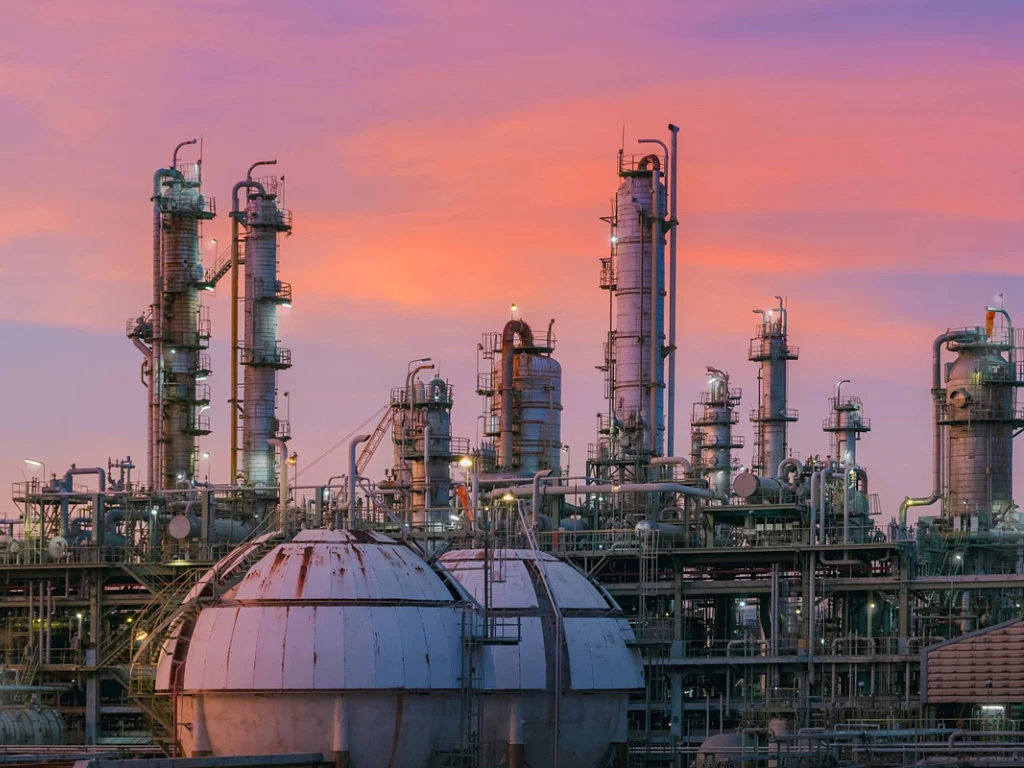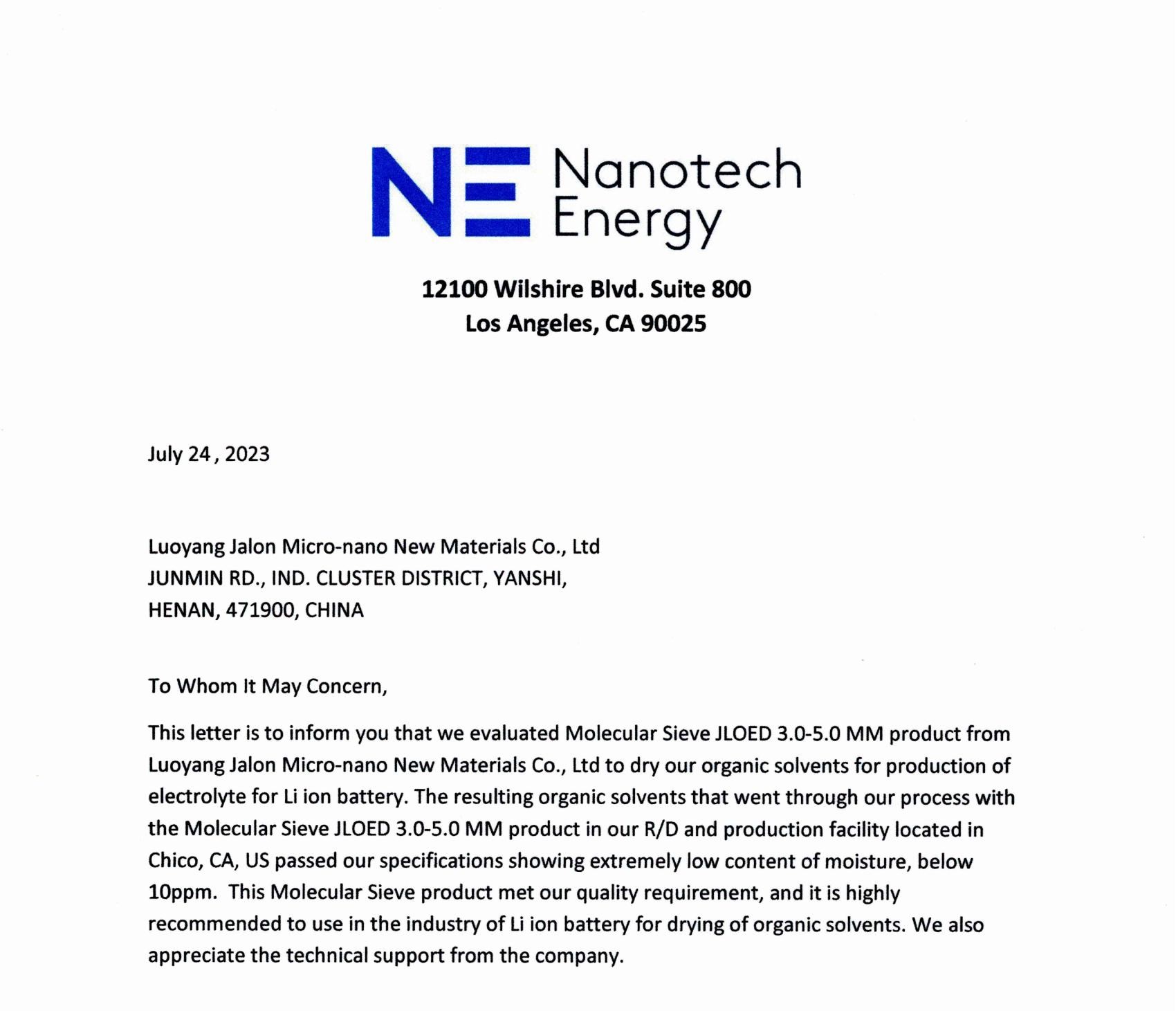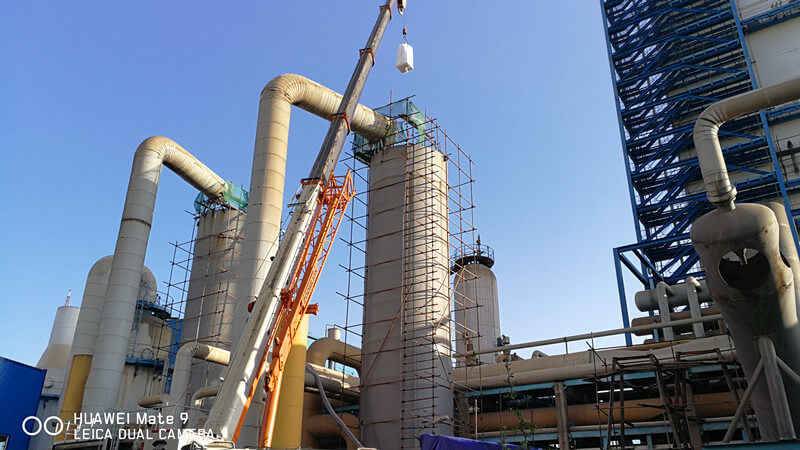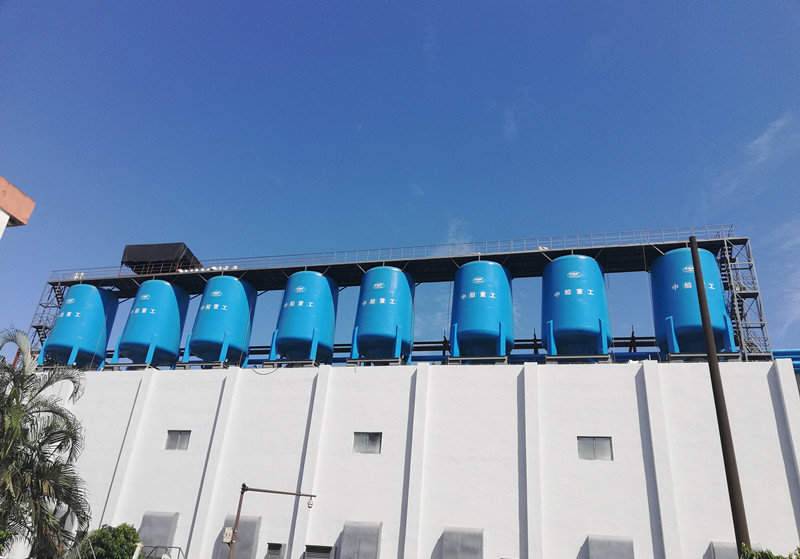What Is Natural Gas Purification and Why Is It Essential?
Natural gas purification is an important step in the oil and gas industry that makes it possible to use natural gas safely, efficiently and at a reasonable cost. In its broadest sense, natural gas purification means the process of separating undesirable substances from the raw natural gas that is produced from oil wells or gas fields. If not removed, these impurities can cause equipment degradation, reduce the energy content of the gas and lead to environmental issues such as emission of greenhouse gases.
Why is this process so critical? First of all, purified natural gas complies with the pipeline quality standards that are necessary for the transportation of natural gas and consumption. It also helps to maintain compatibility with the subsequent processes, for example, power plants, petrochemical plants, and oil refineries that utilize dry natural gas as a source of energy. Furthermore, natural gas purification is essential to meet environmental standards, especially in countries such as the United States that have stringent laws on emission of acid gases such as sulfur dioxide.
It is not just a process of achieving certain technical requirements; rather, it is a process of providing a safe, clean, and efficient energy through the processing of natural gas. In light of the rising need for clean energy, natural gas is more preferred over other hydrocarbons such as crude oil. But to achieve this, the impurities in raw natural gas have to be separated – a process that is complex and needs sophisticated technologies and engineering.

Key Equipment Used in Natural Gas Purification and Their Functions
Natural gas purification requires the application of several critical units of equipment, which are aimed at the removal of various impurities in the natural gas stream. These systems help to ensure that natural gas is safe, of the right quality and meets environmental requirements before it is transported or used.
Separators: In many cases, the initial step in purification, conventional separators are employed to knock out large volumes of liquids including water and denser hydrocarbons from the natural gas stream. This step is useful in preventing damage to downstream equipment and also in preventing corrosion.
Amine Absorption Units: These systems are essential for the elimination of acid gases such as carbon dioxide (CO₂) and hydrogen sulfide (H₂S). These amines undergo a chemical reaction with the acidic components of the gas stream and help in minimizing sulfur content and meeting the environmental standards.
Sulfur Recovery Units (SRUs): When hydrogen sulfide is separated, it is usually treated in SRUs to convert it to elemental sulfur. This sulfur can be sold for use in industrial products such as fertilizers, which gives an economic value to the process.
Cryogenic Separation Units: These units employ very low temperatures to help isolate NGLs, which include ethane, propane, and butane, from the main gas stream in a gas processing plant, resulting in an NGL stream. These liquids can be employed as feedstocks in the production of petrochemicals or as individual products.
Dehydration Systems: To avoid formation of hydrates which cause blockage of pipelines, it is necessary to eliminate water vapor. One of the most common ways of doing this is through glycol dehydration which helps to keep the gas free flowing during transportation.
Mercury Removal Systems: While used in small scale applications, the mercury removal units are essential in avoiding mercury impacts on aluminum parts, especially in cryogenic processes.
All of these systems have their specific function of making the end natural gas product clean, safe, and ready for the market. Appropriate incorporation of these technologies guarantees efficient processing, equipment safeguard, and optimal utilization of natural gas resources.
The Process of Natural Gas Purification
The process of natural gas purification is a complex one that is aimed at the removal of specific undesirable components at various stages. This helps in ascertaining that the end product is compliant with the set standards and can be used in different uses. It is now time to discuss the major steps of the process.
| Step | Objective | Techniques Used |
| Raw Gas Pretreatment | Remove crude oil, water, and solids | Separators, filters |
| Acid Gas Removal | Eliminate CO₂ and H₂S | Amine absorption, molecular sieve adsorption, Pressure Swing Adsorption (PSA) |
| Dehydration | Remove water vapor to prevent hydrate formation | Glycol dehydration, molecular sieves (4A, 13X), activated alumina |
| Heavy Hydrocarbons & Mercury Removal | Separate pentanes and mercury | Molecular sieves (5A, 13X), activated carbon |
| Sulfur Recovery | Convert H₂S into elemental sulfur | Claus process, activated alumina, molecular sieves |
Raw Gas Pretreatment
The first step in the process of natural gas purification is the raw natural gas pretreatment, which is usually accompanied by crude oil, associated water, and solid phase. Pre-treatment normally involves the application of standard separators and filters, including the separation of natural gas liquids. These systems filter out large volumes of impurities to allow the gas to go through other processes.
Pretreatment also conditions the gas stream by controlling its temperature and gas pressure which are essential for further processing. The efficiency of this step defines the efficiency of purification in general. Larger contaminants must be removed at this stage because they can harm other equipment in subsequent steps.
Acid Gas Removal
The process of purification of natural gas involves the elimination of acid gases like hydrogen sulfide (H₂S) and carbon dioxide (CO₂). The next step focuses on managing these corrosive gases, as if not well managed, they present operational and environmental problems. For instance, H₂S can cause severe corrosion in pipelines and equipment, which may be expensive to repair and pose safety hazards. CO₂, on the other hand, has the effect of lowering the heating value of natural gas and it can solidify during cryogenic processes, thus causing blockages and other problems.
If acid gases are not removed from the gas stream, downstream processes such as dehydration and sulfur recovery can be compromised or stop. High levels of H₂S can cause the SRUs to become overloaded, and thus decrease their performance and increase the emissions of noxious gases. Likewise, even 5% CO₂ concentration can reduce the efficiency of cryogenic separation units by more than 20% and the recovery of valuable hydrocarbons such as propane and butane.
To address this, amine absorption is the most common approach that is used. Amines react with H₂S and CO₂ through a chemical reaction that filters out these gases from the gas stream. For further purification, the physical adsorption techniques like molecular sieve adsorption or Pressure Swing Adsorption (PSA) are used. These methods are especially useful in cases where low-sulfur or low-carbon content is needed, for example, after desulfurization, or in the removal of CO₂ in high-pressure gaseous mixtures. Molecular sieves (13X, 4A), for instance, can selectively adsorb CO₂ and H₂S to the extent that the gas is of ultra-high purity and can be used in applications that require high sensitivity.
In some mixed processes, molecular sieves or other adsorption agents are used together with chemical methods to get better results, especially for specific gaseous mixtures.
This way, operators protect equipment, enhance the efficiency of the subsequent stages, and meet environmental requirements. This step is critical to the generation of high quality and cost effective natural gas.
Dehydration
Dehydration is an important stage of natural gas treatment because gas hydrates are solid, ice-like structures that can form when water vapor reacts with natural gas at high pressure and low temperature. Hydrates can cause serious problems such as pipeline blockage, operational interruption, and impede the passage of natural gas, leading to time-consuming problems. Furthermore, water in the gas stream causes corrosion of pipelines and processing equipment and shortens their useful life considerably.
If the process of dehydration is not properly managed, other processes like cryogenic separation and sulfur recovery may be severely impacted. For instance, residual water can freeze in cryogenic units and cause blockages in the equipment and lower the recovery of valuable hydrocarbons such as ethane, propane, and butane. Research has indicated that as little as a few ppm of water can cause a loss of 15-20% in cryogenic operations. Also, water can dissolve acid gases such as CO₂ and H₂S to form highly corrosive acids that would compound the problem.
Primary dehydration is one of the most common methods, and glycol dehydration is the most commonly used method. In this process, triethylene glycol (TEG) is passed through the gas stream where it is used to strip water vapor. This guarantees that the gas is free from water content and it is usually supplied with water content of less than 7 lbs/MMscf for pipeline quality. The temperature of the gas stream is regulated to ensure the efficiency of water removal and to ensure that the performance is constant.
In cases where the gas streams contain relatively higher amount of water, 4A molecular sieves can also be used for the first stage of dehydration. Due to their high adsorption capacity and efficiency, 4A molecular sieves can be the main method in some cases, for example, at low temperatures or when it is necessary to reduce the amount of water before further processing. In these cases, they help to decrease water content in the gas and, therefore, decrease the load on the following dehydration stages, including TEG systems, and improve the efficiency of the gas purification process.
Both methods are essential in regulating the water content in natural gas to meet the pipeline specifications and to make the gas ready for other subsequent processing steps. The decision whether to use TEG dehydration, 4A molecular sieves, or both is based on operational and gas composition needs.
After primary dehydration, further dehydration is necessary for the gas streams that are to be processed for cryogenic or liquefaction, for instance, LNG.
Molecular sieves especially the 13X type are the most commonly used adsorbents for deep drying. They can remove water content to below 0.1 ppm, which makes them suitable for use in cryogenic systems. This ability to selectively adsorb water molecules even at very low concentrations guarantees the best performance under the most challenging moisture conditions such as in LNG production.
Other desiccants like activated alumina is used for moderate drying requirements for instance, achieving a dew point of -40°C. Activated alumina is also used as a pre-treatment material to lower the bulk water load on the molecular sieves, thus increasing their durability and performance. Molecular sieves are preferred for deep dehydration because of their higher adsorption capacity, higher selectivity, and longer operational life. These properties make them invaluable in attaining the extremely low levels of water that is needed in cryogenic and other rigorous processes.
Through proper dew point control, operators avoid corrosion and erosion of equipment, enhance the performance of subsequent processes, and guarantee the customers the supply of clean and dry natural gas.

Removal of Heavy Hydrocarbons and Mercury
Saturated hydrocarbons and other impurities such as mercury are removed in the natural gas processing to meet safety, operational and environmental specifications. Pentane and higher alkanes that are present in the heavy hydrocarbons can lead to serious problems in downstream operations. These hydrocarbons solidify at cryogenic temperatures and cause blockages in equipment and decrease the effectiveness of the process of recovering valuable NGLs such as propane, butane, and ethane. Mercury, including at very low concentrations, attacks aluminum parts in cryogenic heat exchangers, leading to equipment failure, loss of operation time, and expensive repairs.
Molecular sieves (5A,13X) , are the most widely used advanced adsorbents for removing these impurities. Due to their high adsorption capacity and selectivity, they can effectively separate heavy hydrocarbons and at the same time adsorb mercury in a single step. Molecular sieves are particularly useful in cryogenic systems because they can operate at low temperatures without the degradation of their performance. Also, they are regenerable, which improves their affordability and functionality in the long run.
In some applications, other adsorbents such as activated carbon may be used for mercury removal in addition to the primary adsorbents. Nevertheless, molecular sieves are considered to be more effective and versatile as compared to the other adsorbents. They not only purify the gas but also safeguard delicate downstream equipment from damage and possible pollution, which can be very expensive.
If these impurities are not eliminated, they can cause major problems such as plugging of cryogenic units, lower rates of recovery of valuable hydrocarbons, and violation of environmental standards. Through effective treatment of heavy hydrocarbons and mercury, operators protect downstream processes, recover as much of the resource as possible, and meet safety and environmental requirements.
Sulfur Recovery
Sulfur recovery is a critical process after the stripping of hydrogen sulfide (H₂S) from natural gas. This process not only reduces the emission of noxious gases but also converts H₂S into elemental sulfur which is a useful product that is used in fertilizers, chemicals and other products. The most common method is the Claus process, which involves the partial combustion of H₂S to produce SO₂ and then reacting the remaining H₂S with SO₂ in the presence of catalysts like activated alumina or barium sulfate to produce elemental sulfur.
Another important consideration in sulfur recovery is the absence of water in the gas stream since water hinders the efficiency of the sulfur recovery reactions and corrodes equipment. Molecular sieves, especially 4A and 5A, are used in this step to eliminate the remaining water and also to enhance the catalytic activity of the sulfur conversion process. Molecular sieves are used in preference to other desiccants like activated alumina or silica gel because of their high water adsorption capacity, selectivity and thermal stability.
In addition to the advantages of catalytic activity, molecular sieves also demonstrate higher regeneration characteristics and service life, which makes them more economical for long-term use. The pore size distribution of their materials is well controlled to provide the best adsorption and reaction environment, leading to higher sulfur recovery and better plant performance.
Through the application of molecular sieves in the sulfur recovery process, the operators increase the conversion of H₂S, safeguard equipment, and optimize the value of the recovered sulfur within the environmental standards.

Purity Requirements for Natural Gas Across Different Industries
The level of purity that is expected of natural gas differs from one industry to another depending on the use of the gas. It is important to purify in order to have efficient operations, to safeguard the equipment and also to have quality products.
Pipeline Transportation: In the case of pipeline-quality natural gas, the purity requirements are very high in order to avoid any problems during transportation. The gas must not contain acid gases such as hydrogen sulfide (H₂S), water vapor, and other impurities that can cause pipeline corrosion or hydrate formation at high pressure and low temperature. This can be made possible by the application of enhanced adsorbents and desiccants such as molecular sieves, activated alumina, iron oxide (Fe₂O₃) and activated carbon.
Of these choices, molecular sieves (4A , 5A, 13X) are particularly effective in terms of adsorption. While activated alumina is suitable for basic drying, molecular sieves can achieve a dew point of below 0.1 ppm to meet ultra-low moisture demands for sensitive uses. Further, iron oxide and activated carbon are selective for certain impurities such as sulfur or hydrocarbons; however, molecular sieves can adsorb water, CO₂, and H₂S at the same time with high selectivity.
Molecular sieves also have longer service lives and higher regeneration rates, which are more economical for long-term applications. These advantages make molecular sieves the preferred choice for achieving the purity and reliability required for pipeline transportation, safety and efficiency.
Power Plants and Petrochemical Applications: These sectors require very high purity natural gas to support their operations and the quality of their products. In the case of power plants, natural gas has to meet specific moisture and impurity levels, and water content is usually expected to be less than 1 ppm. This level of dryness is necessary to avoid corrosion in turbines and boilers and to achieve stable and efficient combustion.
In petrochemical processes, even ppm levels of impurities such as sulfur compounds and heavy hydrocarbons can interfere with catalytic processes, reduce product formation, and foul sensitive equipment. Natural gas, when used as a chemical feedstock, needs to have sulfur content removed to below 1 ppm due to high purity requirements.
To meet these requirements, molecular sieves are preferred because of their capability to remove water to very low levels and at the same time, selectively remove sulfur compounds and hydrocarbons. Other adsorbents like activated carbon and iron oxide (Fe₂O₃) are used for certain impurities like sulfur or hydrocarbons. However, molecular sieves are more efficient, selective and easier to regenerate than these alternatives, which is why they are used in more challenging processes.
Natural Gas Liquids (NGL) Production: The recovery of NGLs like ethane, propane and butane involves the need to minimize impurities to very low levels due to high purity requirements. In cryogenic systems, the temperature may be below -100°C and therefore water content needs to be below 0.1 ppm to avoid freezing and formation of hydrates that may plug equipment and cause the system to upset. Likewise, the concentration of CO₂ needs to be kept as low as possible in order not to solidify and contaminate the separated components.
To meet these needs, molecular sieves (4A、5A、13X) are applied for deep dehydration and CO₂ removal. Due to their high surface area and selectivity, they are ideal for achieving very low levels of moisture and impurities to enable efficient cryogenic processes.
Other adsorbents include activated alumina and activated carbon which are used in certain applications. Moderate dehydration uses activated alumina while activated carbon is used to remove hydrocarbons and other impurities in trace amounts. Nevertheless, their performance and applicability are generally inferior to molecular sieves, particularly in severe cryogenic environments.
The advanced adsorbents that can be developed to meet the needs of the individual plant allow the operator to obtain the high purity natural gas needed for NGL production while minimizing the risk to cryogenic equipment and maximizing product yield.
Oil Refineries and Specialized Applications: In refineries and some other applications, the composition of natural gas is very important to meet certain operational and product specifications. For example, in chemical production, the lighter hydrocarbons such as methane have to be separated from the heavier hydrocarbons in order to produce valuable chemicals, thus hydrocarbon composition has to be controlled. In these applications, natural gas used as a feedstock may require very low levels of sulfur and moisture, often less than 1 ppm, to interfere with the catalytic processes.
In the same way, condensate wells contain hydrocarbons that are produced and processed into liquid products such as liquid fuels. Here, the presence of impurities including CO₂, water and sulfur must be regulated to enhance product quality and operational performance.
Through customization of purification processes to the needs of the industry, operators can provide safe, efficient and high quality natural gas for various uses.
Why Choose Jalon for Your Molecular Sieves Needs?
Jalon is among the world’s premier producers of superior molecular sieves that have been relied on by industries for more than two decades. Currently, we have 112 registered patents and export them to 86 countries and regions, providing innovative solutions for 20 different applications.
Our molecular sieves, A, X, and Z types are optimized for use in separation, purification and dehydration applications. We are ISO 9001 and ISO 14001 certified to guarantee quality and environmentally friendly processes.
Jalon offers you the advantage of having the most experienced team, the best manufacturing technology, and quality assurance to ensure the highest reliability of your applications. Choose us for a reliable supply chain and innovative solutions that will help you succeed.

Advancements, Challenges, and Future Outlook for Natural Gas Purification
The technology of natural gas purification has been developed considerably due to the increasing demand for clean energy and enhanced standards. Newer cryogenic processes and better adsorption processes and media like molecular sieves have made it possible to separate and remove impurities with higher efficiency and selectivity. These developments not only assist in attaining greater degrees of purity but also in saving energy and expenses. However, to reduce the impact of the industry, purification plants are being powered by renewable energy sources like solar or wind power.
However, there are still some issues that have not been solved yet. The most challenging question is how to cover the costs of purification while maintaining the economic value of the purified gas. Technologies that can perform deep dehydration, acid gas removal, and mercury removal may be capital intensive. In addition, as the environmental standards continue to be raised, purification systems must be able to address more complicated impurities as well as minimize the emission of greenhouse gases.
Prospects for the future will be dominated by the concept of sustainability in the creation of purification technologies. Carbon dioxide removal systems that can capture and store or recycle CO₂ are anticipated to gain more popularity as the world shifts to lower carbon emissions. There is also interest in small and portable purification systems, especially for the extreme and small-scale applications because of their flexibility and logistics.
The future of natural gas purification will be determined by the extent to which it will meet the ever changing energy needs, cost challenges and environmental issues. Further advancement will make certain that natural gas will continue to be a stable, efficient, and sustainable energy source in the transition towards a cleaner energy mix.

